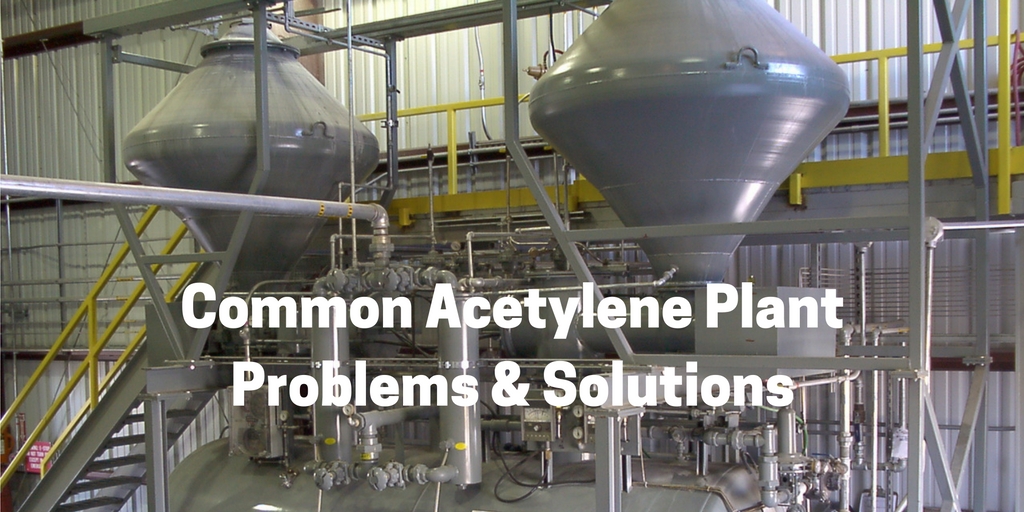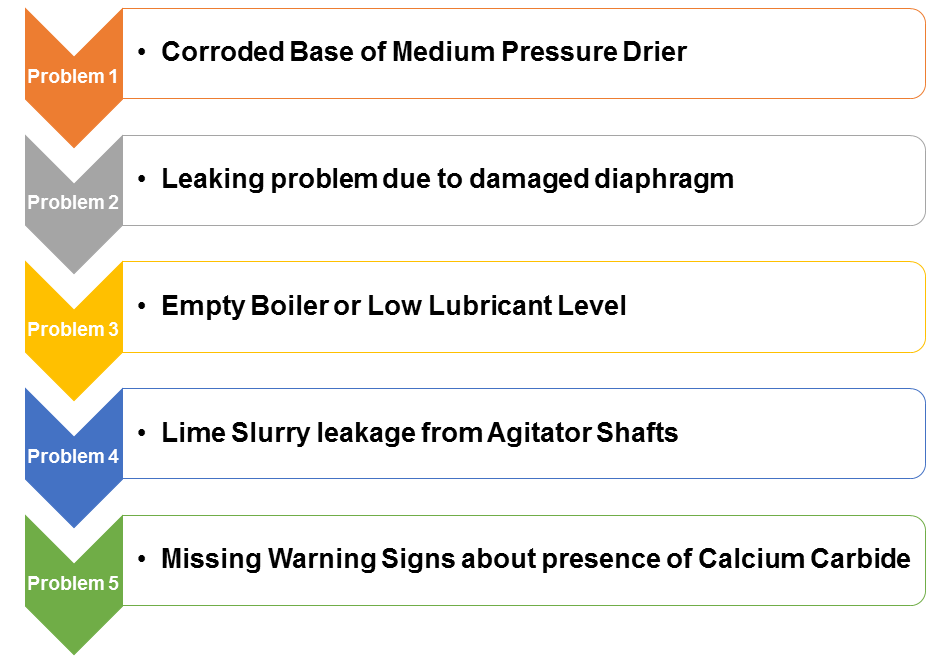Rexarc is currently open from 7:30 AM – 4:00 PM EST, Monday – Friday. Read More
Rexarc is currently open from 7:30 AM – 4:00 PM EST, Monday – Friday. Read More

This is a four-part blog series related to some of the problems uncovered during plant audits. These posts should give you a good idea of the various machines and components of an acetylene plant to look at, in case you are looking for any problems. This will allow you to identify the areas where you might be experiencing efficiency loss.
Below are mentioned some of the common problems associated with acetylene plants:

1. Problem: The base of the medium pressure drier is corroded.
Solution: If the corrosion can be removed without affecting the performance of the drier, it should be removed. Otherwise, the drier should be replaced.
How to Avoid It: The surface of the medium pressure drier should be coated with an anti-corrosion primer. For further protection, paint should be applied over this anti-corrosion primer coat.
2. Problem: Since the diaphragm was damaged, acetylene was leaking from the top of the control unit. Additionally, there was a lime slurry leak from between the control unit and generator.
Solution: A new diaphragm needs to be installed. While replacing the diaphragm, ensure that the new product is in good condition. Additionally, when the diaphragm is being mounted, using bolts instead of screws helps provide a reliable installation.
How to Avoid It: The diaphragm should be checked on a timely basis. In case of a leak, it should be reported immediately.
3. Problem: The oiler is empty. As a result, the machines are not being lubricated well.
Solution: The oiler should be filled with the right lubricant. Improper lubrication can result in reduced component life as well as part failure. Both these problems can end up costing the organization a lot in terms of repair service and replacement cost, down time associated with part failure, as well as safety hazards that unexpected part failure could pose to the organization and its employees.
How to Avoid It: The oiler should be filled with the correct lubricant at all times. The quantity of the lubricant and frequency of changing the same is mentioned in the user manual. Additionally, automated systems can be installed to intimate the supervisor about low lubricant levels. Alternatively, the plant employees can regularly check lubricant levels in all oilers and machines.
4. Problem: There was a lime slurry leak from the agitator shafts.
Solution: The agitator shafts should be lubricated. The agitator shafts wear at a faster rate due to the lime slurry leak.
How to Avoid It: The packing of the agitator shafts need to be changed regularly. Additionally, the agitator shafts should be lubricated multiple times daily, depending on the use/ output of the machinery.
5. Problem: Signs warning people about the presence of calcium carbide in a particular area were missing. If there is any dampening of the calcium carbide, it will result in severe damage.
Solution: Signs need to be installed warning people.
How to Avoid It: All areas that require employees to take some preventive care should be marked accordingly. A regular check should be carried out to ascertain the same.
Read More: Common Acetylene Plant Problems – Part II
Stay tuned for the fourth and final part of this series, where we discuss the importance of conducting acetylene plant audits regularly.

We are a one stop shop from custom vessel production to full skidding, plumbing and instrumentation.

We stand by our processes and communicate with you on your project status as much or as little as you would like.

We continually reinvest in our people, business, and equipment technology to ship quality products on time.
